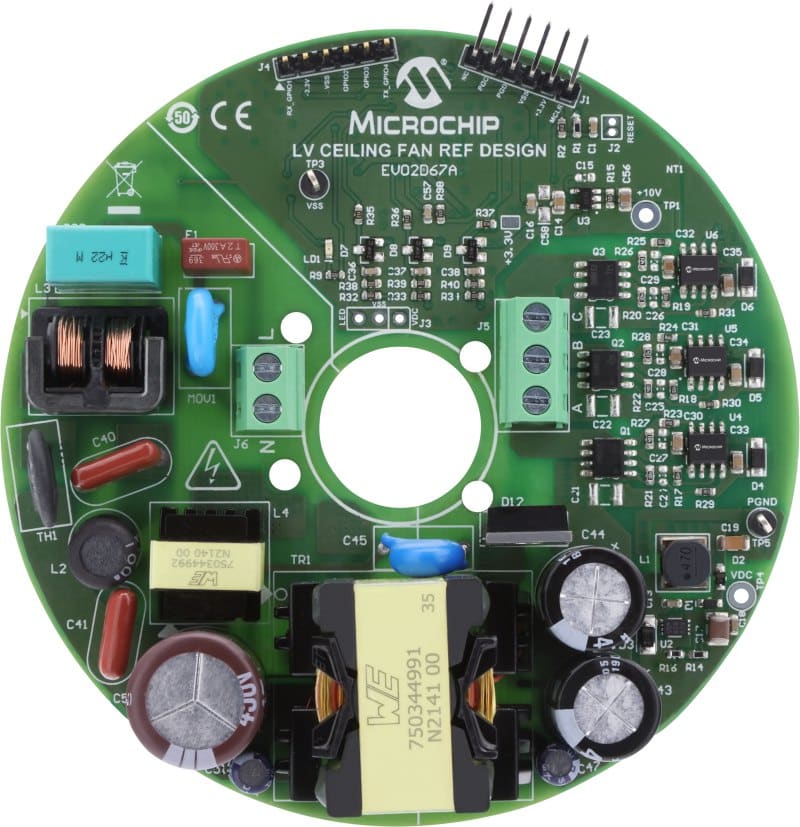The design is specifically tailored to control a low-voltage, three-phase BLDC ceiling fan motor with a power output of up to 40 watts.

To minimize residential energy consumption, ceiling fans and other household fans are transitioning from large and heavy single-phase AC induction motors (ACIM) to smaller, lighter, and more efficient three-phase brushless DC (BLDC) or permanent magnet synchronous motors (PMSM) that offer higher power density. Microchip has launched a reference design for a low-voltage ceiling fan that provides a cost-effective and energy-efficient solution for a low-voltage PMSM fan. The design can operate a ceiling fan at 300 Revolutions Per Minute (RPM) while consuming approximately 17.5W of power, equivalent to the energy required by two Light-Emitting Diode (LED) bulbs that are approximately 60 Watt. This Reference Design controls a low-voltage, three-phase PMSM/BLDC ceiling fan motor. The board operates from the input AC power within the 90-265 VAC voltage range. The design can drive BLDC/PMSM motors with a power output of up to 40W.







